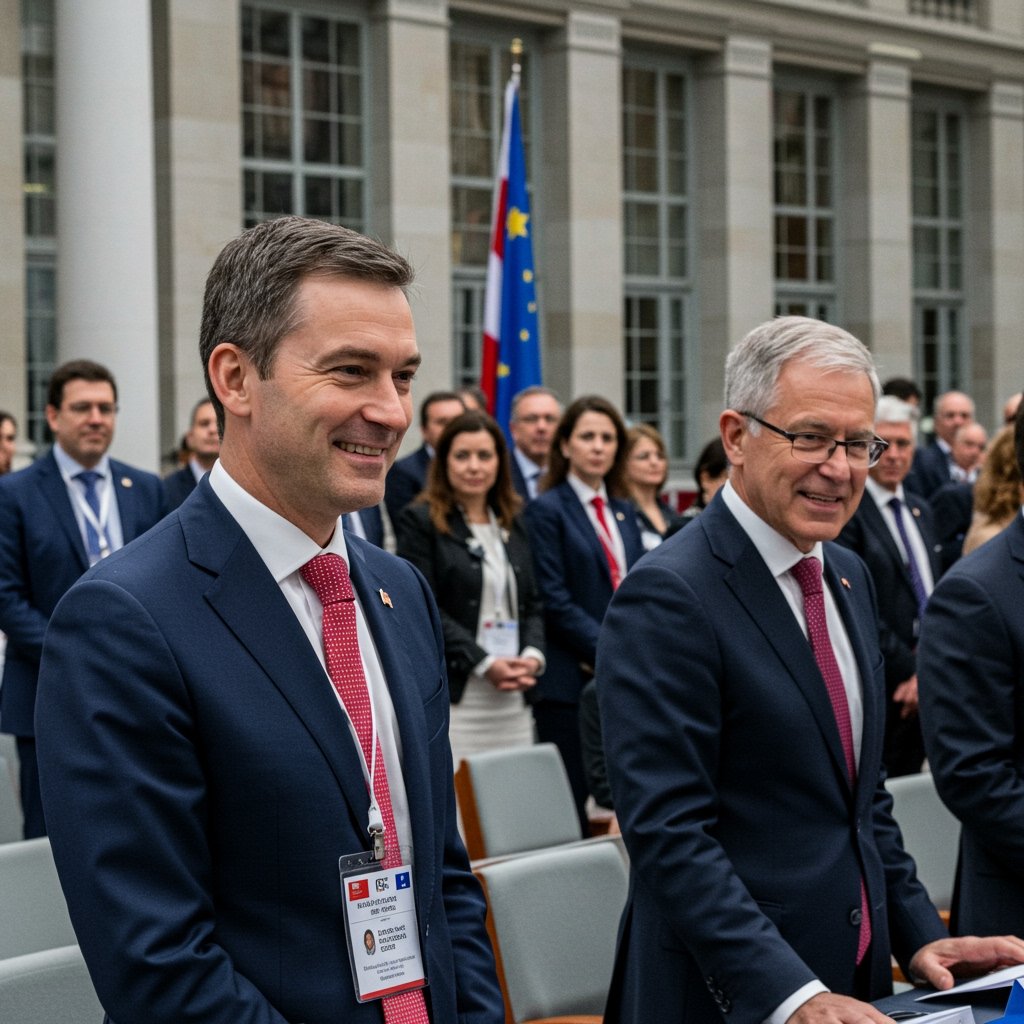Historic Geneva Summit Concludes with Landmark Global Supply Chain Resilience Framework
Geneva, Switzerland – Following two days of intense, high-level negotiations, world leaders and top trade representatives from over 30 nations, including key G20 members and delegates representing major trade blocs, successfully concluded an urgent summit focused on bolstering global supply chain resilience. The critical meeting, held in Geneva, Switzerland, wrapped up on February 27, 2025, with the formal adoption of a landmark accord: the “Joint Framework for Global Supply Chain Resilience.”
The necessity for such a gathering was underscored by the profound disruptions witnessed in recent years, ranging from the widespread impact of the COVID-19 pandemic to escalating geopolitical conflicts. These events exposed critical vulnerabilities in the complex, interconnected web of global trade, leading to shortages, price volatility, and significant economic strain across industries and nations.
Convened amidst this backdrop of persistent uncertainty, the summit in Geneva aimed to move beyond reactive measures towards a proactive, coordinated global strategy. Discussions centered on identifying systemic risks and developing concrete mechanisms to prevent future crises from crippling the flow of essential goods and components worldwide. The diverse participation, encompassing both developed and developing economies, highlighted the universal recognition of the challenge and the shared commitment to finding collaborative solutions.
The Summit’s Genesis and Urgent Mandate
The idea for an urgent summit on supply chain resilience gained momentum over the past year as governments grappled with the long-term fallout of supply disruptions. The initial focus was on immediate crisis management – securing medical supplies, managing energy price spikes, and addressing logistics bottlenecks. However, policymakers increasingly recognized that a more fundamental, structural approach was required to build resilience for the future. The Geneva summit was the culmination of these efforts, bringing together disparate national and regional initiatives under a proposed global umbrella.
The mandate was clear yet ambitious: Forge a consensus on a common approach to risk assessment, transparency, diversification, and crisis response in global supply chains. Participants were tasked with balancing national security interests and economic competitiveness with the imperative of maintaining open and reliable international trade flows. The very nature of the discussions necessitated a frank exchange on sensitive topics, including dependence on critical raw materials, vulnerabilities in manufacturing hubs, and the potential for trade restrictions to exacerbate future crises.
The two-day format allowed for focused working sessions interspersed with high-level plenary discussions. Trade ministers, alongside heads of state or government from several key participating nations, articulated their concerns and proposed solutions. Representatives from international organizations like the World Trade Organization (WTO) and the Organisation for Economic Co-operation and Development (OECD) also played advisory roles, contributing technical expertise and data analysis to inform the negotiations.
Key Outcomes: The “Joint Framework”
The central achievement of the Geneva summit is the formal adoption of the “Joint Framework for Global Supply Chain Resilience.” This document, the result of extensive negotiations, outlines a multi-pronged strategy designed to make global trade networks more robust, adaptable, and transparent.
The framework establishes a set of principles and protocols that participating nations agree to uphold and implement. Among the most critical components agreed upon are:
Establishment of Early Warning Systems: A commitment to developing and sharing information regarding potential disruptions before* they escalate into full-blown crises. This involves creating standardized metrics for monitoring supply chain health, identifying potential choke points, and sharing intelligence on emerging risks, whether they stem from natural disasters, health emergencies, or geopolitical developments. The framework encourages the creation of national and regional ‘fusion centers’ that would feed information into a global coordination mechanism.
* Promotion of Strategic Diversification: Recognizing the risks associated with over-reliance on single sources for critical goods or components, the framework promotes strategies to enhance diversification. This does not necessarily advocate for reshoring all production but encourages exploring alternative sourcing locations, developing redundant production capacities, and fostering trade relationships with a wider range of partners. Incentives for businesses to adopt diversification strategies, potentially through risk-sharing mechanisms or investment support, are also discussed within the framework’s guidelines.
* Simplification of Trade Logistics and Procedures: Bottlenecks at ports, customs delays, and complex regulatory environments can severely impede the flow of goods during disruptions. The framework commits participating nations to undertaking measures to streamline customs procedures, enhance port efficiency, invest in digital trade solutions, and harmonize relevant regulations where possible. The aim is to create a more agile logistics environment capable of adapting quickly to changing circumstances.
Beyond these core pillars, the framework also touches upon areas such as labor standards in supply chains, the role of technology in enhancing transparency and traceability, and the importance of public-private sector collaboration in identifying and mitigating risks.
Funding and Implementation Mechanism
A crucial element underpinning the framework’s ambition is the commitment of financial resources for its implementation. Participating countries collectively pledged an initial multilateral fund totaling $50 billion. This fund is earmarked to support several key objectives:
* Financing the development and deployment of the joint early warning systems and associated data infrastructure.
* Providing technical assistance to developing nations to help them identify supply chain vulnerabilities and build domestic resilience capabilities.
* Investing in critical infrastructure projects, such as improving logistics corridors, upgrading port facilities, and developing digital trade platforms, particularly in regions that serve as key nodes in global networks.
* Potentially supporting pilot projects for strategic diversification in critical sectors.
Details regarding the governance and allocation mechanisms for the $50 billion fund are expected to be finalized by the technical committees. The fund represents a significant collective investment, signaling the seriousness with which participating nations view the need for concrete action.
The framework emphasizes that its successful operationalization requires immediate and sustained effort. Consequently, technical committees are slated to begin their work without delay. These committees, comprising experts from signatory nations and relevant international bodies, will be responsible for developing the detailed protocols, standards, and guidelines necessary to translate the framework’s principles into actionable policies and projects. The ambitious timeline set is to operationalize the core components of the framework by the end of 2025.
Expert Reactions and The Path Forward
Initial reactions from trade experts and economists have been largely positive, albeit with a recognition of the significant work that lies ahead. Dr. Anya Sharma, a leading economist specializing in international trade, commented, “*The adoption of this joint framework is a critical step forward. It acknowledges the interconnectedness of global supply chains and the need for collective action. The commitment to early warning systems and diversification is particularly welcome.”
However, she also cautioned, “*The devil will be in the details of implementation. Harmonizing data standards, ensuring equitable access to the fund, and navigating national interests in diversification strategies will be complex challenges. The technical committees face a demanding task.”
Representatives from industry associations also welcomed the move, highlighting the need for greater predictability and stability in global trade. Many businesses have been calling for clearer international cooperation to help them manage supply chain risks more effectively.
The Geneva summit represents a pivotal moment in global economic governance. While the framework itself is a significant achievement, its ultimate success will depend on the willingness of signatory nations to translate their commitments into concrete policy changes and investments. The work of the technical committees over the coming months will be crucial in shaping the practical application of the framework and building the truly resilient global supply chain network envisioned in Geneva. The world will be watching closely as the ambitious plan moves from agreement to action, aiming to safeguard the flow of goods against the uncertainties of the future.






